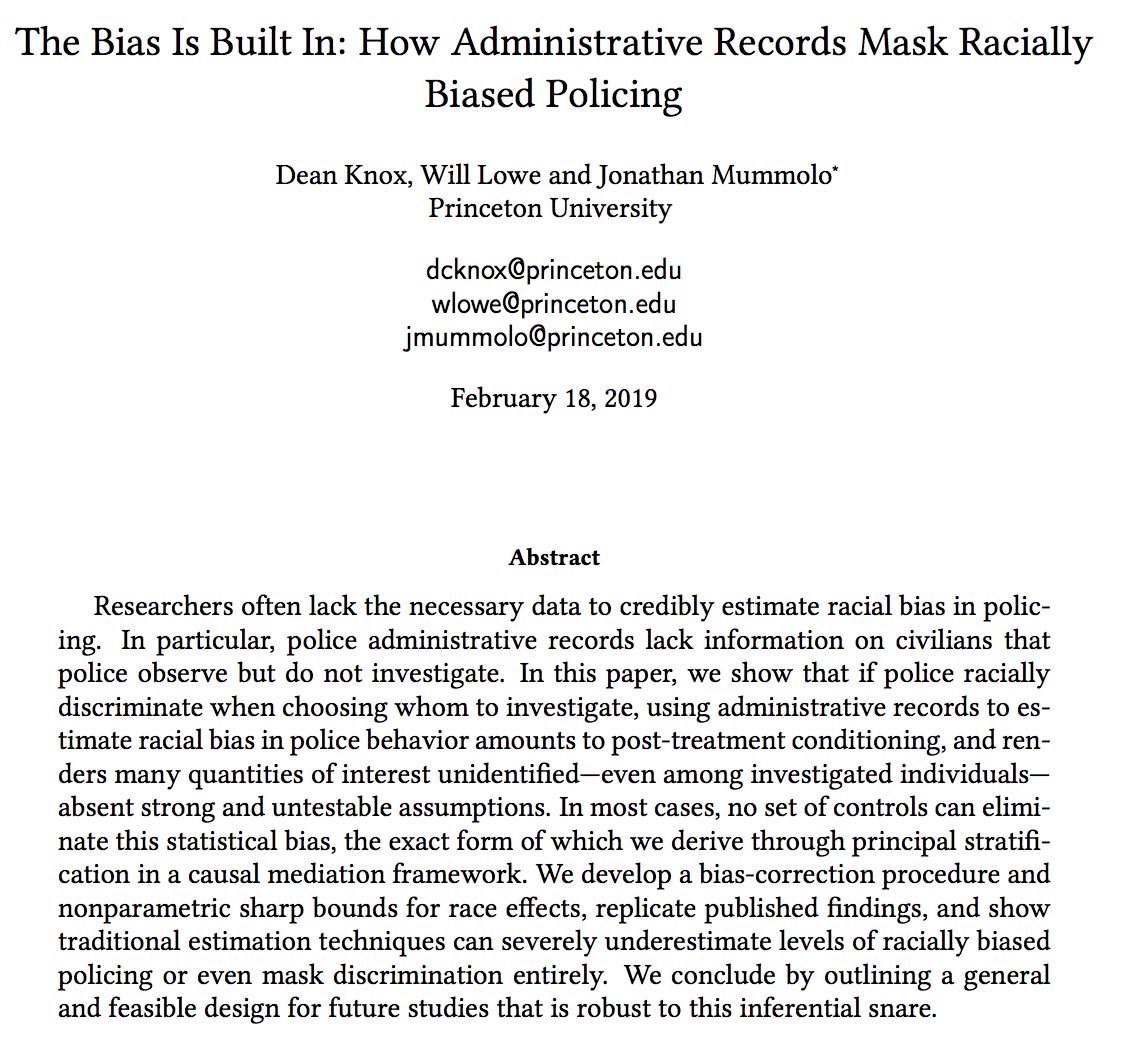Estimates of racial bias using police data are wrong if police discriminate in who they stop. New paper w/ @dean_c_knox, @conjugateprior: analysis in Fryer (forthcoming) likely masks hundreds of thousands of instances of discriminatory police violence. 1/n https://goo.gl/yfPM5r ">https://goo.gl/yfPM5r&qu...
The study of racial bias in policing is a causal inference problem, but prior work rarely makes causal estimands and attendant assumptions explicit, making analyses difficult to evaluate. We formalize the problem using principal stratification in a causal mediation framework.
People police observe but do not stop don’t appear in police data. If civilian race affects who police stop, estimates of racial discrimination in police behavior are biased absent implausible assumptions that have so far gone unstated in prior work.
Fryer (forthcoming) and Fryer (2018) acknowledge this threat to validity, but conclude, “It is unclear how to estimate the extent of such bias or how to address it statistically,” (Fryer 2018, 5). Our paper clarifies this issue.
After clarifying causal quantities of interest, we derive the statistical bias induced by the common analytical approach---i.e. using only police data & adjusting for omitted variables---and use the results to bound the true race effect.
We show that absent implausible assumptions, the common approach understates the share of police violence caused by civilian race, or masks it completely. More control variables *don& #39;t* help, and effects are not even identified *among incidents that appear in police data*.
Fryer (forthcoming) also found no racial bias in police shootings. We cannot replicate that analysis because the data are not yet posted, but we note that it suffers from the same design flaw and suspect it underestimates racial discrimination in fatal police encounters.
Some caveats...
CAVEAT 1: we do not show a mechanism for racial discrimination, officers& #39; personal motives or psychology. We show evidence police would have applied force against minority civilians at lower rates had the civilians been white—important distinction.
CAVEAT 1: we do not show a mechanism for racial discrimination, officers& #39; personal motives or psychology. We show evidence police would have applied force against minority civilians at lower rates had the civilians been white—important distinction.
CAVEAT 2: Our results rely on weaker assumptions than prior work, but they still rely on assumptions. Some may find them implausible. Our hope: by making assumptions explicit, we clarify this line of inquiry and help improve future work.
Prior work w/ similar approaches is likely uninformative or misleading. Only reliable way to avoid these issues: better research designs. To that end, we outline a feasible design to study racial bias in traffic stops. Key feature: data on those police observe, but do not stop.
Our proposed design will likely require collaboration with one or more police departments. Law enforcement agencies: if you would like to help produce credible research that can improve police performance, please contact us. n/n

 Read on Twitter
Read on Twitter















